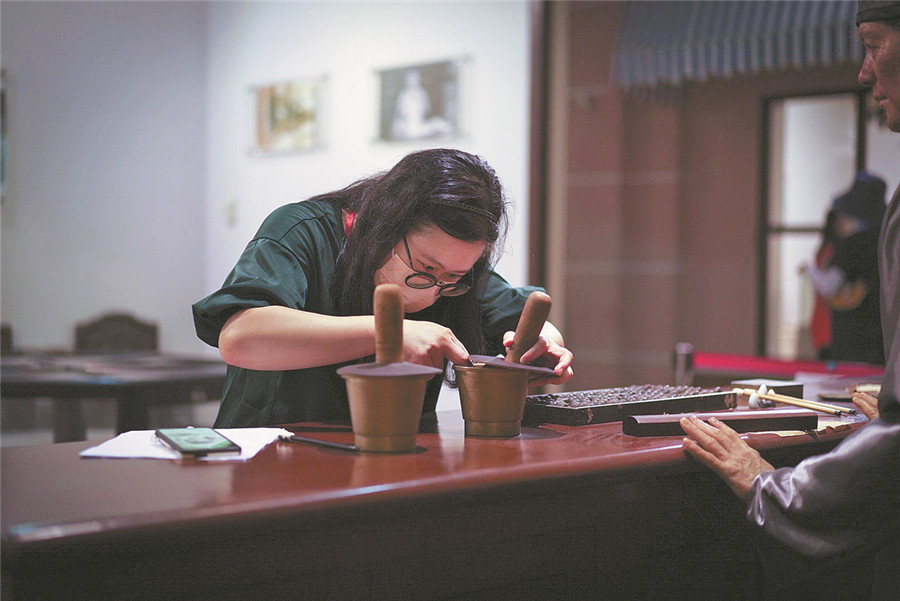Innovation takes museums into the future

A visitor takes part in the role-playing game at the Jiangmen museum last year. [China Daily]
Collections for all
Several museums in Guangdong are using the power of technology to transform cultural relics into digital assets to be appreciated and preserved in the virtual world. By paying just 20 to 30 yuan (2.86 to $4.30), online visitors experience priceless treasures.
For example, a mobile app enables visitors to see a collection featuring a porcelain pillow from the Yuan Dynasty (1271-1368) that bears an illustration based on the classic Chinese folk story Journey to the West.
On phone screens, all characters in the illustration come "alive", reviving an iconic scene in the folk tale in which Buddhist monk Tang Sanzang rides a white horse, slowly going about his work to obtain sacred texts. His disciples, Monkey King Sun Wukong and the pig demon Zhu Bajie, lead the way, wielding their weapons to protect Tang. Another disciple, Sha Wujing, follows closely behind, holding an umbrella for Tang.
This is just one of dozens of digital collectibles launched recently by museums in Guangdong. Since April, Guangdong Museum and others in the region have released more than 20 digital artworks based on their flagship collections — issuing more than 65,000 copies, most of which sold out immediately.
Chen Shaofeng, deputy director of Guangdong Museum, said that in addition to offering a trendy and convenient way to appreciate cultural relics, digital collectibles also help form bonds between consumers and cultural relics, inspiring exploration of the stories behind these items.
Responding to concerns about data security risks, Chen said digital collectibles are mostly recreated based on cultural relics, so original data from the source asset is limited. Also, these collectibles cannot be sold on online platforms, so such risks can be controlled as long as museums remain alert to them.
Museums are now considering launching their own platforms to better manage their digital programs, in addition to collaborating with platforms operated by e-commerce giants Alibaba and Tencent, Chen said.
The museums are also planning to create digital collectibles featuring themed exhibitions. Chen said placing well-curated exhibitions with distinct themes online will leave a deeper impression on visitors.
Taking on new life
Hong Kong is also warming to cultural relics presentation and promotion work.
In July, exhibitions to mark the opening of the Hong Kong Palace Museum, or HKPM, featured dozens of new media interactive installations based on national treasures on loan from the Forbidden City in Beijing.
One installation enabled visitors to peek into the dreams of Emperor Qianlong (1711-99) during the Qing Dynasty (1644-1911). Visitors lay on a couch to see images projected as "dreams" on the ceiling, including a portrait of Qianlong's beloved queen and the poem he wrote for her after she died.
Jeffery Shaw, who designed many of the installations, said digitization enables wider access to cultural relics, adding that exciting examples of new media exhibits featuring cultural heritage are being showcased at exhibitions in museums, galleries and universities.
Burgeoning public demand and appreciation of digital cultural heritage have led to exhibitors becoming more adventurous. Shaw said that with the local authorities' commitment to art and technology, he feels that Hong Kong is fast becoming a global leader in this field.
The opening of the HKPM means that the city now has more room to diversify development of creative products themed on cultural relics.
























